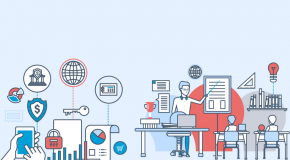When Ken Allen first took charge of DHL Express in 2009, the company had lost €3bn in seven years. The first step back from the brink was to pull out of the intra-US express delivery market and focus on international services. DHL was forced to close a large number of outlets and let go of thousands of employees. In response to these difficulties, Mr Allen, together with his management team, created and launched a bespoke employee engagement programme to the tune of over €100m. Starting in 2009, the Certified International Specialist (CIS) programme was rolled out to all of DHL’s 100,000 employees across all 220 countries and territories.
Employee engagement is often overlooked by general management, who tend to consider it as HR’s domain. Part of the problem is that engagement is a difficult concept to define, measure and monitor. Broadly speaking an engaged employee is one that understands their role, looks for improvements in how they perform, and is willing to go the extra mile. Studies abound on the benefits of increased employee engagement: the 2012 Global Workforce Study by Towers Watson found an average one-year operating margin that was close to three times higher in companies with high and sustainable engagement levels (as defined by Towers Watson) compared to companies with lower engagement levels.
In many ways the CIS programme at DHL is a training tool. Employees are expected to complete a series of modules starting with “Welcome to DHL”, moving on to “Welcome to my country” and “Welcome to my function”. Each completed course is then recorded in their special-issue DHL passports. But what makes CIS stand out as a training programme is how little HR had to do with its conception and delivery. “I didn’t see this as a HR programme at all. I saw this as me and my team driving a big cultural change”, says Mr Allen. So he brought in a marketing agency before approaching a first-class boutique training company. Mr Allen and his team have been directly involved in designing the modules and developing content, and have delivered a number of the training sessions first-hand. “We as managers really need to understand, be comfortable with and fully support the content and message of CIS,” says Mr Allen.
The CIS employee engagement programme is credited with some remarkable outcomes. DHL’s yearly, voluntary employee survey has a return rate that is above 90%. Between 2010 and 2012 the survey results have mapped a 9 percentage-point increase in employee engagement. Improvements in DHL’s hard numbers are also attributed to the improvements in engagement. The company reported €1bn in profits in 2012, and productivity on the job increased while the volume of shipments also grew and headcount remained stable.
After a few tough years filled with losses and cutbacks, Mr Allen felt he and his team had to get people back on side. CIS was a big investment for a company that was struggling to make ends meet, but “it just had to be done.” To make it successful, management had to be involved from the offset: “People expect top management to be responsible for setting direction and for providing the training and tools needed to get there.” But, perhaps more importantly, Ken Allen is adamant that it is not for HR to motivate people. “That’s management’s responsibility.”
The views and opinions expressed in this article are those of the authors and do not necessarily reflect the views of The Economist Intelligence Unit Limited (EIU) or any other member of The Economist Group. The Economist Group (including the EIU) cannot accept any responsibility or liability for reliance by any person on this article or any of the information, opinions or conclusions set out in the article.




